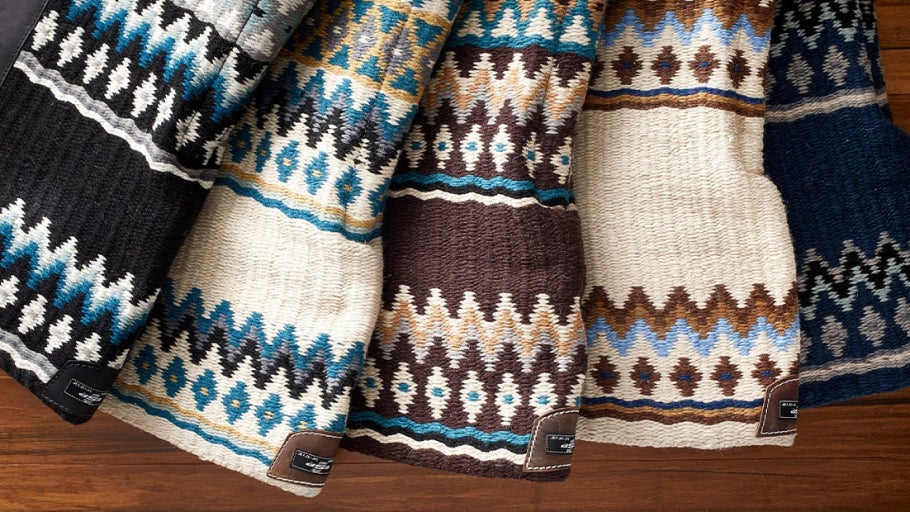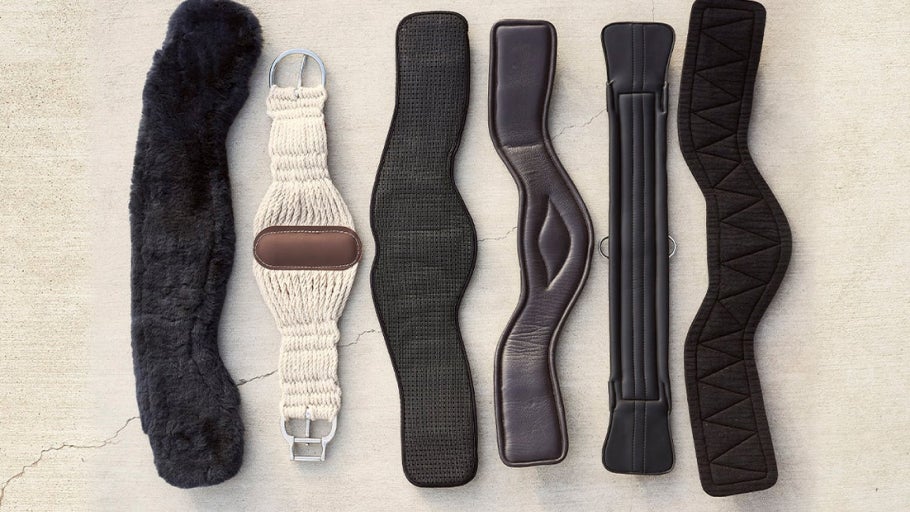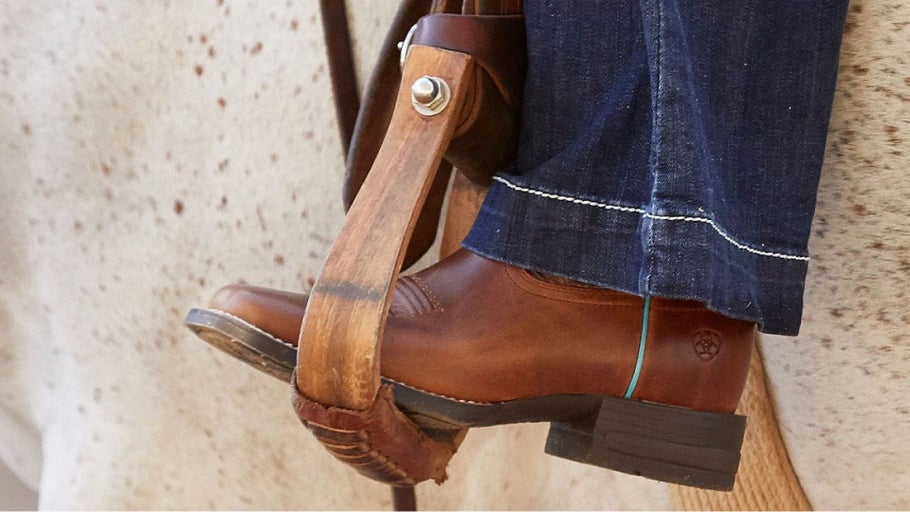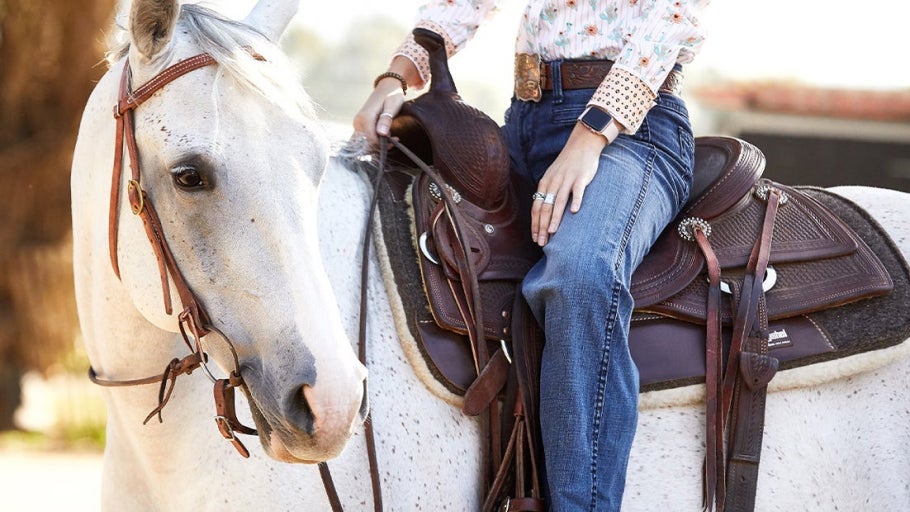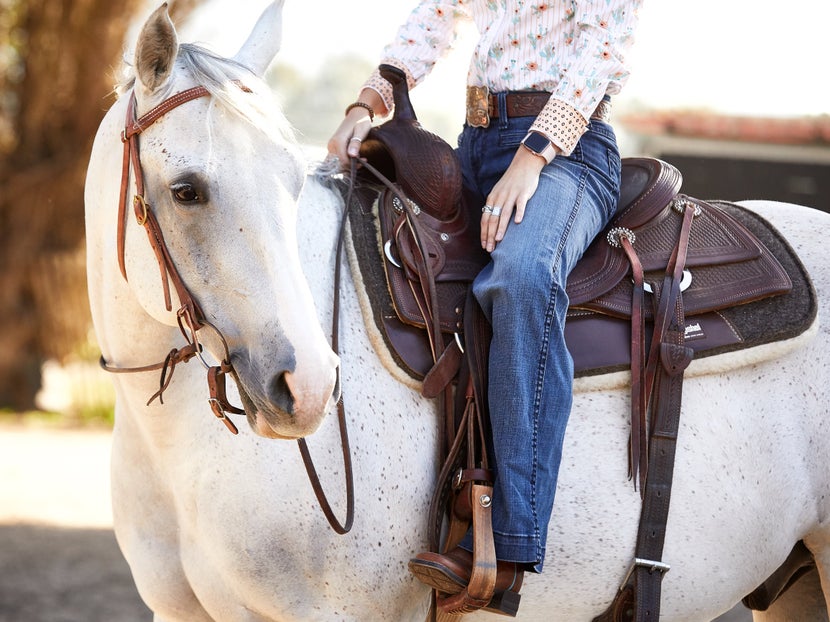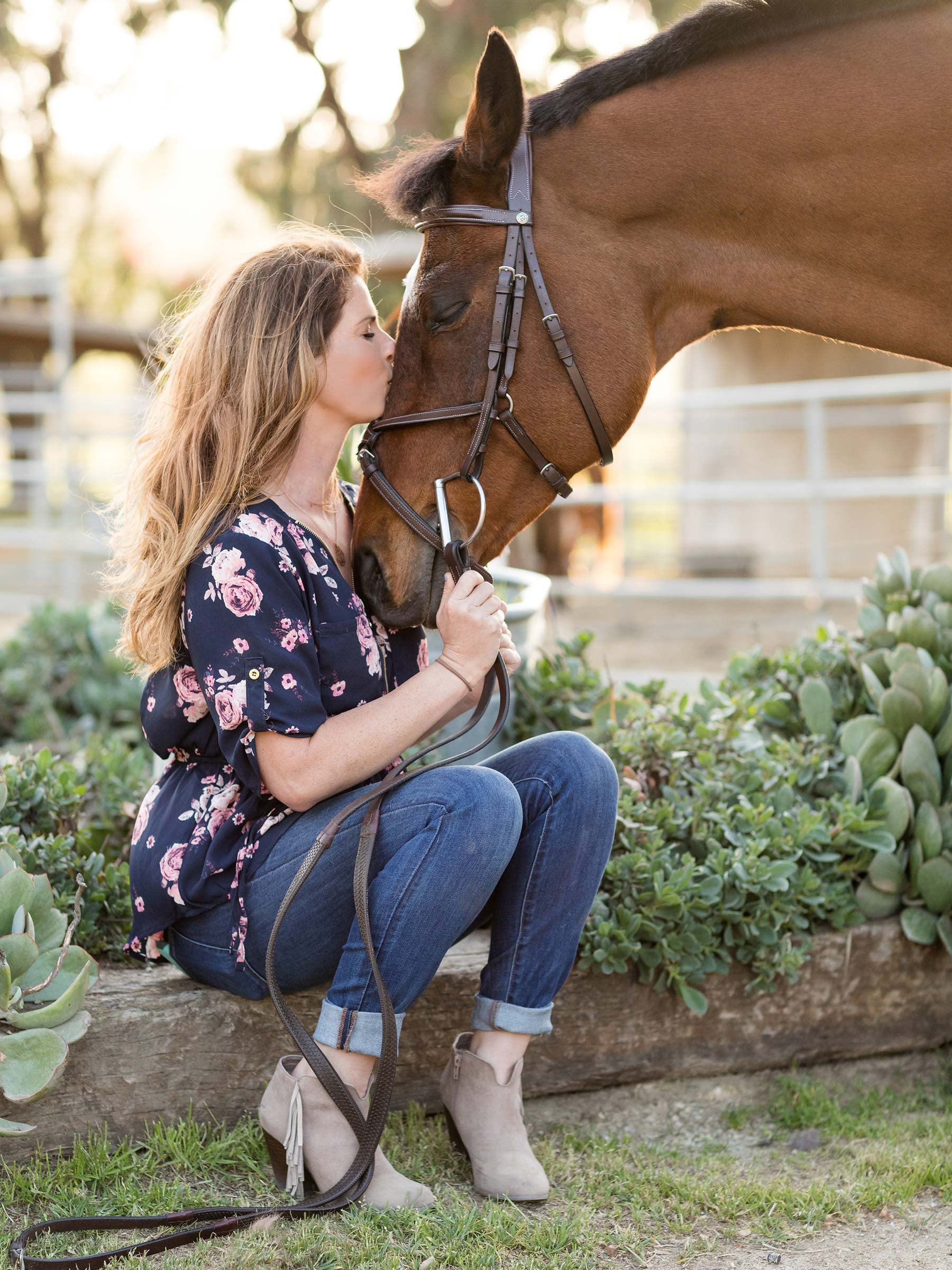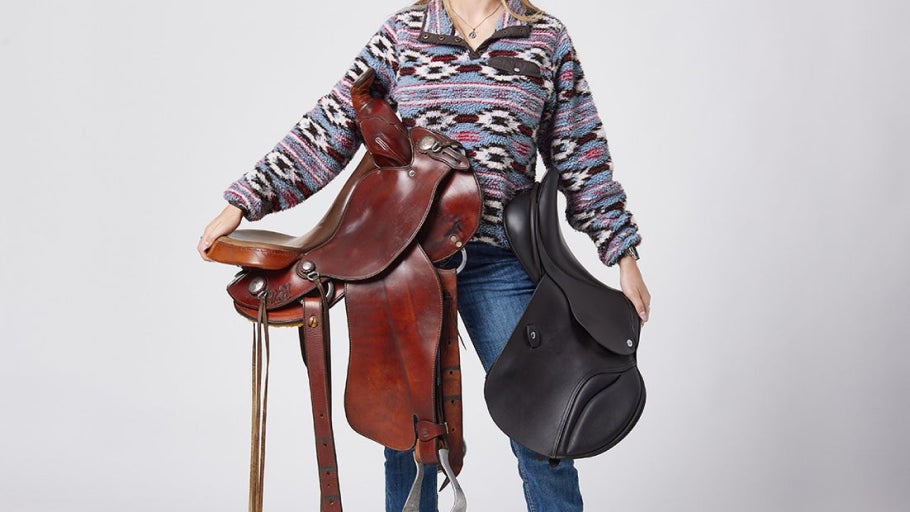
Western Saddles: A Complete Guide
The saddle has evolved immensely throughout the years. The styles of saddles we know and love today were most influenced by the Spanish vaquero (cowboy), who ultimately invented the first western saddle. Each western saddle style has unique features necessary for the jobs and events they are used for. The most common types of western saddles are all-around, roping, barrel, cutting, reining, and trail (otherwise known as pleasure) saddles.
Read along to learn about the different parts of a western saddle and how they differ from style to style, as well as what makes these saddles fully functional and personalized.
Parts of a Western Saddle
The parts shown in the above diagram are the most common features every saddle will have. Each specific piece may vary slightly depending on the event or purpose of the saddle, but it will always be there in some form. Note that the back cinch is an optional piece of tack that may not be present on every saddle but can be added if desired. Western saddles all have different variations of these seventeen parts:
- Saddle Horn: Gives riders something to hold or wrap their rope around when working in the saddle. Depending on the type of saddle, the horn shape can vary a lot.
- Pommel/Swell: This creates the front portion of the rider's seat and provides a more secure placement. The pommel is also the base for the saddle horn.
- Seat Rise: The portion of the seat directly behind the pommel. It is inclined slightly to help keep the rider in the back of the saddle in the working position.
- Seat: The lowest point where the rider sits. It places the rider in a balanced position and can be specific to the event or purpose of the saddle.
- Cantle: The cantle helps keep the rider in a safe, comfortable, and balanced position on the horse's back.
- Skirt: The skirt provides stability for the saddle and can feature intricate tooling and designs. The skirt also helps reduce pressure on the horse's back caused by the rider's weight.
- Back Housing: Similar to the skirt, it is a way to distribute pressure and weight comfortably on the horse's back.
- Front Cinch: The cinch holds the saddle and keeps it stable on the horse's back. It is comparable to an English girth.
- Latigo: The latigo is the connection point for the cinch and the saddle. It is wrapped multiple times through the saddle's D ring and cinch to get the best possible fit.
- Strap Holder: This holds the excess latigo strap so it doesn't get tangled in your other tack.
- Back Cinch: The back cinch is designed to prevent concussion on the horse's lower back. This way, the saddle doesn't bounce up and down. Because of its location on the horse, it is supposed to have about an inch of space between it and the horse to maintain comfort.
- Billet Strap: The billet strap is the connection point for the back cinch and the saddle. It works the same as an English billet.
- Cinch Hobble: The cinch hobble connects the front cinch to the back cinch on the bottom of the horse's belly. This prevents the back cinch from sliding back into the horse's flank and sheath/udder area.
- Fenders: The fenders give your legs a place to rest while riding. They connect the stirrups to the saddle and are adjustable for different lengths needed.
- Stirrup: What you rest your feet in, keeping you more secure in the saddle and allowing you to get up off the horse's back.
- Hobble Strap: Keeps the stirrup secure at the bottom of the fender. These can be as simple as a tied piece of leather.
- Gullet: The gullet provides clearance for the horse's withers and spine. This can change based on the shape and size of the horse's back (narrow vs. wide).
Types of Western Saddles
Barrel Saddles
Barrel saddles are designed to be lighter in weight and typically have a round skirt that uses less material to help achieve a quicker time when racing. These saddles feature deeper seats and a higher cantle to secure the rider when traveling at faster speeds and around tight turns. The horn is also designed thinner than your standard horn for the rider to easily grab. Barrel saddles have fenders that are free-swinging and not secured to the saddle, ensuring freedom of movement and better balance while riding. Barrel saddles are typically equipped with additional features to accompany partnering tack, such as a back cinch and breast collar to prevent the saddle from slipping and sliding off the sides during a run. Barrel saddles can usually be adjusted to the rider's aesthetics by adding bling, such as conchos, accented silver, and crystals!
Roping Saddles
Roping saddles are specifically designed for use in roping events, such as team roping. A rider will typically chase a calf or steer at a fast speed and dally (wrap and anchor) their rope to the saddle horn once caught. To learn more about roping events, check out our Ropes Guide and Roping for Beginners articles!
Because of the need to dally, roping saddles must have a stronger tree and horn, making them much heavier than barrel or cutting saddles. The horn on a roping saddle will be strong enough to withstand anything that's tied to it. The added weight also comes from the reinforced rigging attached to the tree, providing a more secure attachment. Roping saddles typically have roughout or suede seats to prevent the rider from sliding, allowing them to focus on the task at hand. The stirrups on the saddles are hung more forward than on other saddles, giving riders a secure seat whether they're going fast or rapidly stopping. The roping saddle also features a low cantle and slick pommel, allowing the rider more movement and the ability to quickly dismount.
Cutting Saddles
A cutting saddle will have a tall, thin horn that gives the rider an easy spot to hold onto when working cattle. The horn is meant to be grasped by only your hand and isn't built to withstand any heavy work; if this type of saddle is used for heavy work, you will risk breaking the horn off. The cutting saddle will also have a back cinch, slim stirrups, a low cantle, wide swells, and a long, flat seat. They typically feature skirts and fenders that are free swinging and forward hung, and are made of roughout leather to provide a better grip for the rider. Cutting riders need to be able to move with their horse's quick lateral movements, so having a well-balanced saddle is key. These saddles also have double riggings for more connection points.
Reining Saddles
Reining saddles allow the horse and rider to communicate with each other through subtle cues. These close-contact saddles ensure the horse and rider can communicate using quiet movements from the rider's legs to the horse's sides. This type of saddle features a lower horn and pommel with a flatter seat that does not impede the reins or any body cues. These saddles will have butterfly skirts or cut-out skirts, and they utilize in-skirt riggings. Reining saddles often have accents of fancy tooling or conchos for a personal touch.
Show Saddles
Used exclusively in the show ring, show saddles are more decorated and appearance-focused. Adorned with silver trims and designs, these saddles are truly a showstopping part of the whole ensemble. Show saddles are not used in roping disciplines or those that feature quick maneuvers. You will commonly see show saddles in western pleasure, trail classes, or breed-specific shows. These saddles are meant to make you and your horse stand out while providing a balanced seat for the rider.
Trail & Pleasure Saddles
Pleasure and trail saddles are lightweight with a padded seat for extra comfort while riding. These saddles are the most versatile, as they are available in various combinations of different trees, horns, swells, seats, and skirt styles. The trail saddle typically comes with many tie strings to attach your gear, like saddle bags. Generally, a Trail saddle is used in conjunction with a breast collar to keep the saddle aligned while going up steep hills.
All-Around Saddles
All-around saddles are designed for all-around use. They have seats that aren't quite as cupped as barrel saddles but not as flat as roping saddles, which assists with security during fast-paced activities. They also feature slightly more padded seats for leisure rides. These saddles have a thicker horn than barrel or cutting saddles, yet are still slimmer than traditional roping saddles (so that you can comfortably fit your hand around if need be). The horn should not be used to dally, as it is not built with the necessary strength. If you want a saddle that does almost everything, go for an all-around saddle. Once you get into more specific needs, it will probably be better for you and your horse to move into a saddle that is built for that job.
Youth Saddles
Just as you'd expect, youth saddles are made for children. Finding a regular saddle that can keep your kiddo safe and comfortable while allowing them to communicate with their horse is a tricky task. Luckily, there are some reliable options out there specifically designed for young riders. Kid saddles are great for little ones to build their confidence and skill, and they're typically lightweight enough that the child can tack up on their own. Youth saddles come in the different saddle styles mentioned above, so they can excel in their chosen sport.
Western Saddle Pads & Accessories
What is a saddle without the fun accessories and saddle pads? Saddle pads and saddlebags can make riding more enjoyable and functional. Everything we put on our horses should have a purpose; whether it's a stylistic function or utility, useful is useful! With saddle pads in particular, it can be confusing to choose between the different shapes and sizes. That's why we have compiled useful tips and tricks to help you in our articles on:
Similarly, we have picked our Best Western and Trail Stirrups to help you with the rest of your Western tack search! Other saddle accessories, like seat cushions, are lifesavers for long rides and busy days. Keeping tools or snacks (for human and horse) at the ready can be the difference between a great ride and a reason to turn around.
Caring for Your Tack
Taking care of your equipment to keep it looking great is important for its overall longevity. Using saddle covers and bags is a simple way to keep your tack in top condition. They can protect your saddle from the elements and even barnyard visitors like rats.
Using leather cleaning materials can give your tack a new lease on life and increase its functional years. Dry, dirty, cracked tack is unsafe for you as a rider and can harm your horse by rubbing on them or creating a dangerous situation. So do yourself a favor and clean your tack! Be sure to check out our article on How to Clean Horse Tack for an in-depth guide on how to keep everything in tip-top shape.
Frequently Asked Questions
Do I need a discipline-specific saddle to do that discipline?
The short answer is no, but the different types do have structural differences that make disciplines easier and safer. Roping events should use a roping saddle because of the stronger horn but barrel racers don't need a barrel saddle.
How do I know if my saddle doesn't fit me or doesn't fit my horse?
Saddles have a structured position for where the rider should sit. If you aren't sitting in the spot you should be, then it's likely that it's not the correct size for you. For your horse, a useful way to test the fit is to observe the sweat marks left after a ride. If the sweat is even and there are no gaps, it is likely a good fit. If there are blotches of sweat and dry spots, then it is likely a poor fit. Unsure how to decipher the size? Check out our guide on How to Measure a Saddle.
Do I need a back cinch?
No, a back cinch isn't necessary for all western riding. It is useful when quick maneuvers are in play and the saddle is at risk of slipping and sliding. In speed events, it can help reduce concussion on the horse's back, but for leisure rides, it might never play a role.
Do different materials in saddles make you ride differently?
In a way, yes, they might provide more grip and friction, which helps to keep you secure in the saddle. Some brands produce synthetic saddles, which are the lightest option, but these are not as sturdy as leather options. Synthetic saddles come in fewer styles and variations, but do provide great alternatives for people looking for one.
Closing Thoughts
When deciding on the perfect western saddle, you should take into consideration your overall riding goals. Whether you are in the market for a roping, barrel, cutting, reining, or trail saddle, remember that there is always a saddle out there that's just right for you and your companion. For any further questions or concerns, please reach out to our friendly customer service staff at info@ridingwarehouse.com or by calling 1-800-620-9145. Ride on!
Related Articles

